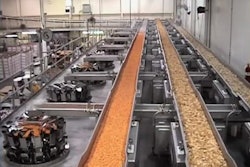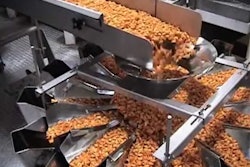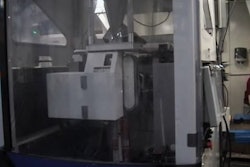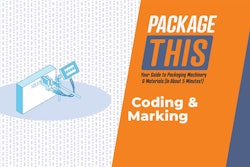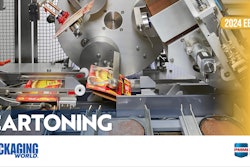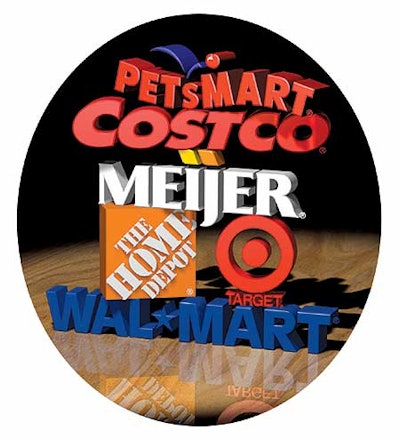
High-volume retailers are becoming dictatorial about which products they carry in their stores, and more of them are calling the shots when it comes to packaging. Why? Because the competition for sales is more intense than ever. With 24 sq’ of retail floor space for every person in the United States, retail is oversaturated, according to retailing consultants.
The biggest demands on packaging come from three types of high-volume retailers—warehouse club stores, mass merchandisers, and “category killers.” Within these categories, each retail chain wants packaging to fit its specific merchandising strategies. Thus, retailers are changing the traditional package development process. Consumer packaged goods (CPG) companies must address retailer demands as an integral part of the package development process, not simply as a last-minute “add on” to the development process.
One significant response to retailer demands is a greater emphasis on secondary and tertiary packaging. That has meant more printing on corrugated cases. It includes increasing importance of display packaging. It results in increasing emphasis on display pallets. Multipacks and high-visibility packaging are other formats that answer retailer needs. Each of these responses to retailer demands results in packaging that fits into retailer logistical and merchandising strategies.
Consumer packaged goods companies have used all of these packaging formats in the past. However, the emphasis on them is increasing. Outsourcing to contract packagers is also on the rise as a tactic to address the needs of retailers.
Retailer environment
Leading-edge retailers have become more aggressive players in the packaging process because they see packaging as a promotional and merchandising tactic with significant influence on their businesses. Retailers’ abilities to track product velocity—the speed at which products move off store shelves—gives them a product and packaging evaluation tool. Extensions of radio frequency identification (RFID) technology will accelerate that kind of analysis; while RFID is seen today as a logistical management tool, its ability to gather data will give retailers even greater ability to measure what sells. The bottom line is that retailers will be able to measure performance better and gauge which packages fly off store shelves.
What differs today is that retailers believe they know as much about the factors that lead to sales as the product packager. Leading retailers identify packaging features they see as important, and then they specify which of those features packages in their stores must have. However, these retailers also accept ideas from packagers, ideas that require give-and-take communication among all players in the value chain. That give-and-take has been called the “integrated value chain,” and it is replacing the older linear value chain in which players at the head of the supply chain proposed ideas that filtered down the chain.
This report gives CPG companies and their packaging suppliers an analysis of retail strategies of major chains. By knowing those strategies, CPG companies and their packaging suppliers can be partners in the integrated value chain. Estimates are that as many as one-quarter of CPG companies understand that their relationship with retailers and packaging suppliers has changed. For those companies, this report will reinforce some strategies and introduce ideas for additional strategies. For the other 75% of companies, the strategies in this report provide avenues for them to adapt and thrive in the changing environment.
Consider food products as an indicator of the change at retail. In 2002, approximately 53% of all food products moved through what are considered traditional grocery stores. By 2010, traditional grocery stores will account for 40% of food volume and possibly as little as 35% of the volume. That is a swing of 13 to 18 percentage points of food products from grocery stores to alternative channels, according to retail analysts.
The three types of retailers that are at the leading edge of change each evaluate packaging issues differently.
• Warehouse club stores are the “members only” retailers. They are leaders on packaging issues such as display pallets, multipacks, and logistical efficiencies. While forecasters disagree on how much growth is left in the warehouse club store channel, these stores will continue to be on the leading edge in dictating new packaging tactics.
• Discount mass merchandisers—the foremost being Wal-Mart—emphasize shelf impact, multipacks, and logistical efficiencies.
• “Category killers” are retailers that focus on one product category—for purposes of this study, pet products, office supplies, or home improvement products. They are much closer to traditional outlets in their merchandising strategy.
Packaging issues
From a packaging perspective, this report evaluates the packaging formats most affected by retail changes and suggests that CPG companies redefine the way they think of packages to better fit today’s marketplace realities. Key is the idea of “unit-of-purchase” packaging. That concept assesses packaging options by analyzing what packaging unit the consumer is really buying. It may be a multipack, or it may be a large recloseable pouch with multiple servings. In looking at the unit of purchase, packagers have to understand the drivers that dictate the buying decision for different unit-of-purchase packages. Then, they have to focus packaging development efforts on that unit of purchase rather than thinking in terms of primary, secondary, or tertiary packaging.
Multipacks, for example, are growing at 10% to 20% per year because they respond to retailer needs. The multipack is the unit that consumers purchase, and packagers need to focus development efforts as much on the multipack as on the primary package it holds. High-visibility packaging, which includes thermoformed clamshells and blisters, is another category growing because of the way consumers make purchase decisions at the retail shelf. Flexible packaging, with its inherent characteristic of high-impact graphics, also influences the consumer at the retail shelf.
The role of “retailer promotional packagers” is emerging as an expanding service to meet retail needs. This type of packager—most frequently called a contract packager or an assembler—repurposes primary packages. In a straightforward approach, repurposing a package can involve putting three consumer-sized cereal cartons into a master carton for sale at a club store. It may include putting carded packages into a shipper that incorporates integral display pegs.
Changes in the way retailers operate are affecting logistical packaging, too. Pallets need to both protect products and offer display potential. RFID tags will reshape logistical concepts and will become marketing research tools by 2005 (when Wal-Mart goes “live” and expects its top 100 suppliers to be on board). The term “sticky prototypes” is emerging to describe the package’s ability to act as a research tool. An RFID tag—or an even more sophisticated miniaturized electronic device—collects information as the package moves through the logistical chain and even into the consumer’s home. By downloading data gathered by RFID tags in the process, packagers can analyze packaging requirements.
Product categories
Different product categories need to respond in different ways to the demands of retailers. Retailers do not handle and merchandise all product categories in the same way. Frozen food manufacturers, for example, are responding to the “drive-in” freezers at warehouse club stores. “Drive-in” freezers require secondary packaging that can withstand added handling within the retail outlet, and they require pallets that support product display inside the freezer.
Pet foods require different types of displays in different types of outlets. In category-killer stores, they respond to display requirements such as end caps, a traditional display format found in grocery stores. In discount mass merchandise and warehouse club outlets, they are relegated to the store’s periphery, and they are sold in larger packages.
Private-label products rely on packaging to differentiate them from national brands. Most high-volume retailers have made private label a significant business strategy, and they ask national-brand vendors to create private-label products that will compete with the national brands on the store shelf. Packaging is a critical tool in making that differentiation.
Specific retailers
This study analyzes North American retailers only. Unlike many packaging technologies that are similar around the world, retail practices differ among countries. Retail responds to the social environment in which it operates, and this study looks at that environment only within North America, and focuses on the United States and Canada. Major retailers included in this study are:
• BJ’s Wholesale Club is the smallest of the wholesale club stores with $5.3 billion in sales. It focuses on the East Coast. Like all wholesale club stores, BJ’s sells to both individual consumers and small-business customers. Individual consumers account for 90% of its sales.
• Costco Wholesale Corp. is the largest of the wholesale clubs with sales of almost $38 billion. It has grown from the West Coast and generates almost 60% of its sales from small-business customers. It emphasizes an upscale look, and it wants packaging to support its “treasure hunt” merchandising strategy.
• Home Depot is the largest home-improvement chain with revenues of more than $58 billion. Its private-label strategy is a central marketing tool, and CPG companies can gain access by creating and packaging a brand exclusively for Home Depot.
• Kmart is emerging from Chapter 11 bankruptcy. Its merchandising and branding strategies cannot be discerned now.
• Meijer is a leader in the superstore concept, with virtually all of its stores of this type with more than 175ꯠ sq’ of retail space. Its wide grocery aisles—12’ to 15’—require packages that can be recognized from ranges farther than packages in traditional grocery stores.
• Office Depot is an office supply category killer. A significant growth area for Office Depot is in Internet sales, up 34% in 2002. Because it ships orders in less-than-pallet loads to customers who have ordered over the Internet, protective packaging requirements change, compared with packaged goods shipped only on pallets.
• PETsMART is a category killer in pet products, and it has revenues of $2.7 billion. Among volume retailers, it follows a merchandising pattern similar to that of traditional grocery stores.
• Sam’s Club is a division of Wal-Mart Stores and generates sales of approximately $32 billion. Packaging has been a focus at Sam’s Club as it tries to improve its merchandise quality, in part due to perceptions created by packaging with a “value” component. Sam’s Club is also trying to change its customer base. In the past, it has catered to consumers, but is repositioning itself to become more attractive to small-business customers.
• Target is the No. 2 volume retailer with total sales of almost $37 billion. With its “upscale” look, Target outperforms Wal-Mart in terms of gross margins. Target has 28% gross margins, while Wal-Mart is at 21.6%. Target achieves superior margins by balancing low prices on “staple” products with higher margins on designer brands. Target uses packaging to denote the panache of its products.
• Toys “R” Us is implementing a “boutique” merchandising strategy within its stores, and it welcomes “try me” packaging that encourages children to interact with packages and products.
• Last but not least among the high-volume retailers covered in this report is Wal-Mart, the “500-pound gorilla” of high-volume merchandisers. Sales volume for Wal-Mart stores is approximately $157 billion, and Sam’s Club adds $32 billion. Wal-Mart carries a reputation as a hard bargainer with vendors. However, Wal-Mart also sees packaging as both a marketing tool and a cost-reduction tactic. From a cost-reduction perspective, Wal-Mart popularized the phrase “PDQ.” That commonly used phrase—in its simplest definition—refers to trays holding multiple primary packages. The trays allow store personnel to stock shelves with multiple units by handling just one tray. Because Wal-Mart looks to packaging as a marketing tool, CPG companies cannot simply give this retailer generic, national packaging programs. Remember, Wal-Mart didn’t become No. 1 by doing what everyone else does.
Jim Peters is a packaging consultant based in Oak Park, IL. For a full prospectus or to order a copy of this report, call Packaging Strategies at 610/436-4220 or send an email to [email protected].
